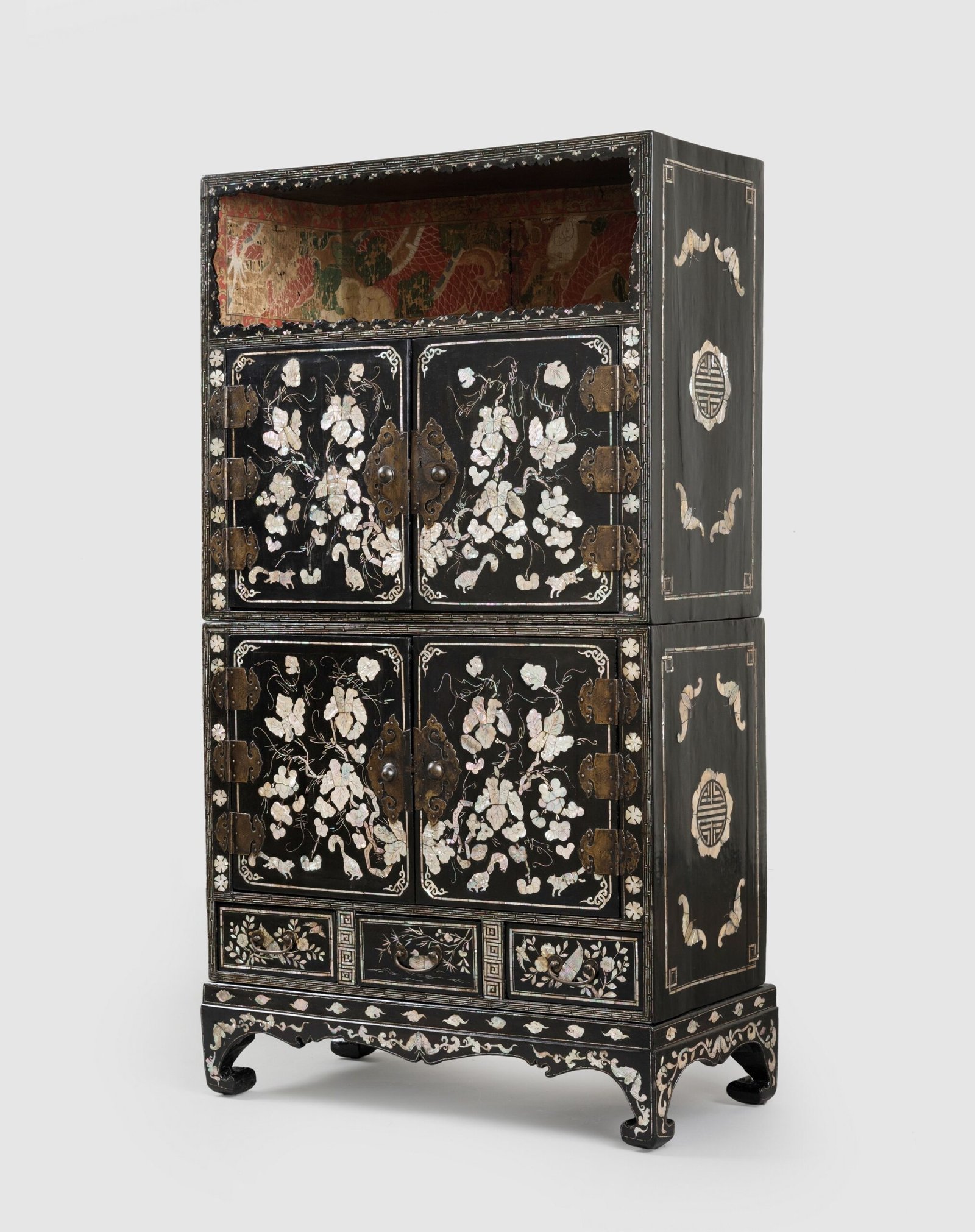This small piece of furniture is rarely described in publications, both in Korea and abroad. It is quite special, and we thought it would be interesting to present it. Hardly ever found in specialized galleries or at auctions, our observations are based on photographic documents from private collections or museums in Korea. Often finely executed, it seems to have belonged to members of the Korean noble class, better known as “Yangban“.
Given the small number of members in this segment of the population, it’s understandable that few pieces remain on the market today. Indeed, demographic studies indicate that only 10% of the population is considered to belong to the Yangban caste.
In 1894, The yangban class was abolished, which slightly narrowed the gap between the highest and lowest classes.
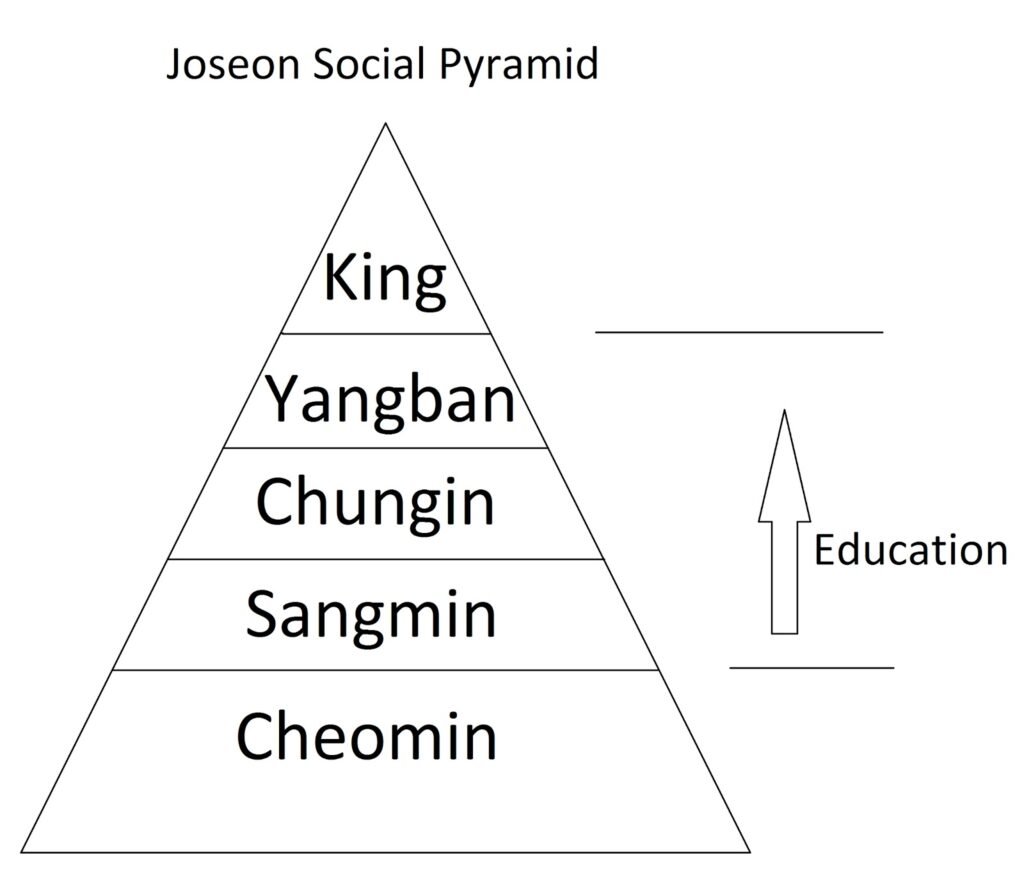
Society in the Joseon dynasty was built upon Neo-Confucianist ideals, namely the three fundamental principles and five moral disciplines. There were four classes:
The yangban nobility, the “middle class” jungin, sangmin, or the commoners, and the cheonmin, the outcasts at the very bottom.
Society was ruled by the yangban, who constituted 10% of the population and had several privileges.
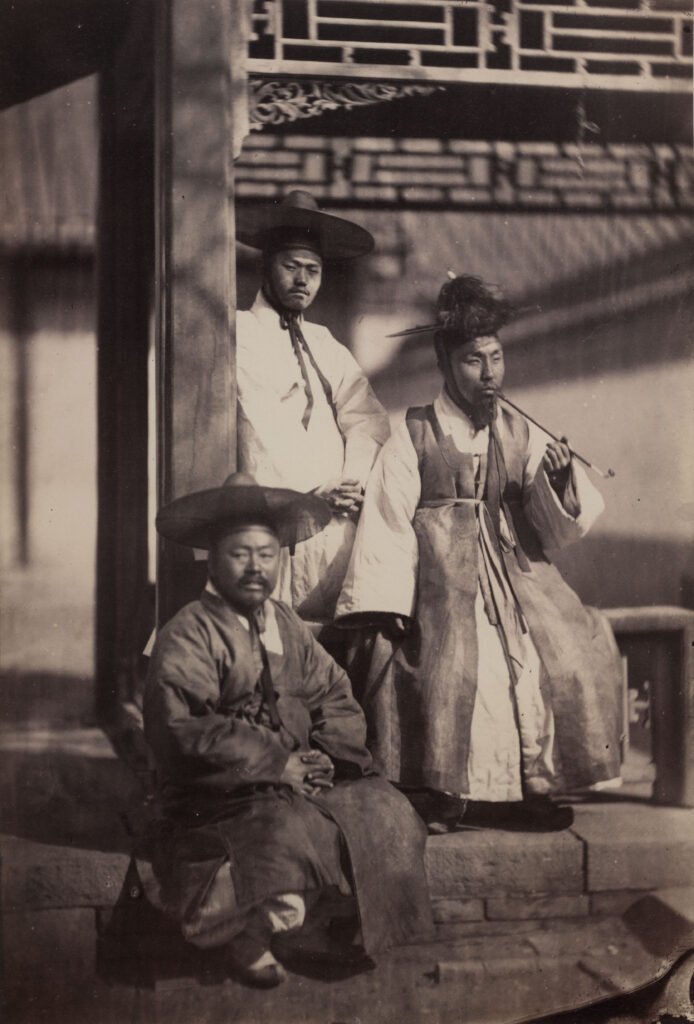
These cabinets were smaller than other furniture present in the noble’s study room (SARANGBANG – 사랑방) such as bookcases or shelves. Their average dimensions were H. 70 – 100cm, W. 50 – 75cm, D. 30 – 35cm. They consisted of several levels, with an open space for displaying valuable objects, a row of drawers, and a compartment closed by doors for storing documents. They rested on elaborate feet.
Their decoration also varied depending on the owner. In the men’s quarters, the furniture was often simpler and in dark colors. On the other hand, women tended to prefer more decorated furniture, often covered in lacquer with mother-of-pearl, tortoiseshell, and shagreen inlay.
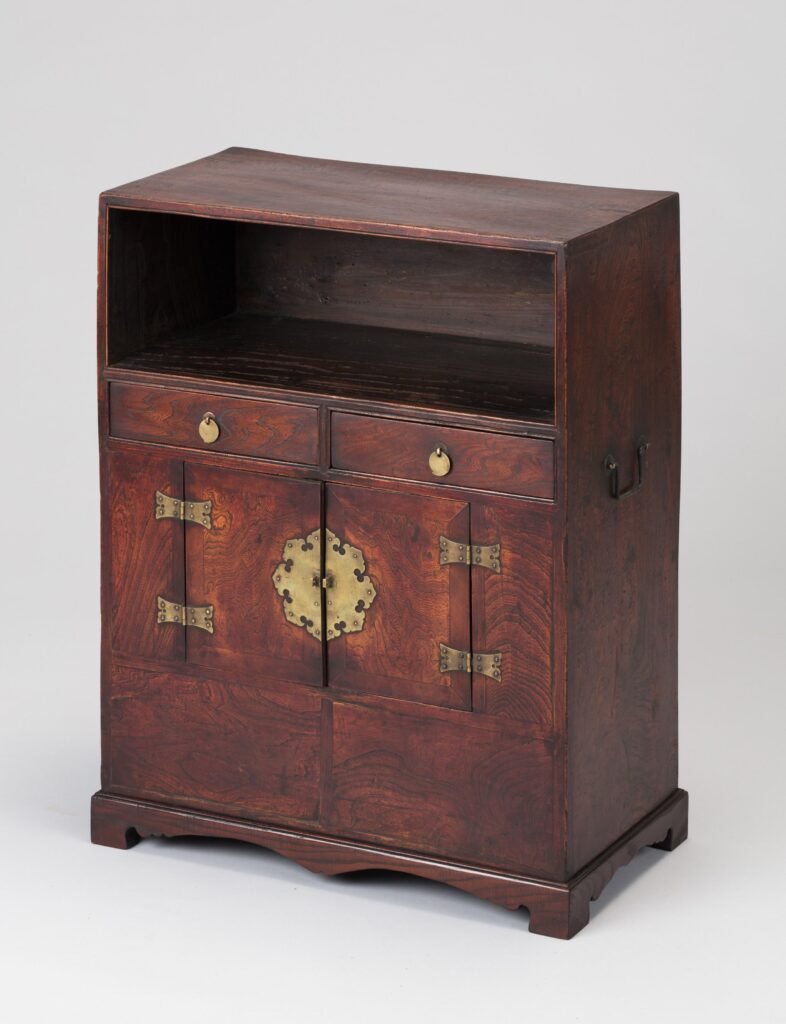
Collection: National Folk Museum, Seoul.
This small cabinet consists of three levels: an open space for placing various objects, a central part with two drawers, and the bottom containing a compartment that opens with two doors. Probably the possession of a gentleman.
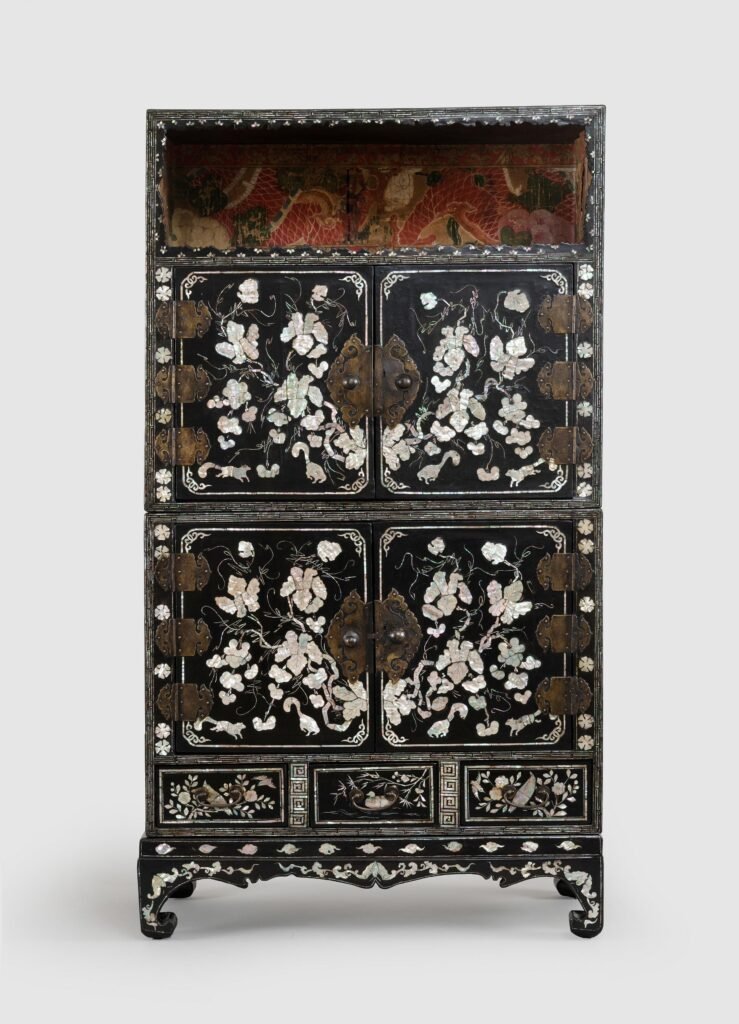
This four-tier cabinet features an open top compartment for storing items. The central section comprises two levels accessed via doors, while three drawers are situated in the lower part of the cabinet. It boasts a rather intricate design compared to typical furniture. Covered in black lacquer with mother-of-pearl inlays showcasing floral and animal motifs, it exudes elegance. Both the open portion and the interior of the two compartments are adorned with paint paper depicting religious figures. Such attention to detail in the interior work is relatively uncommon.
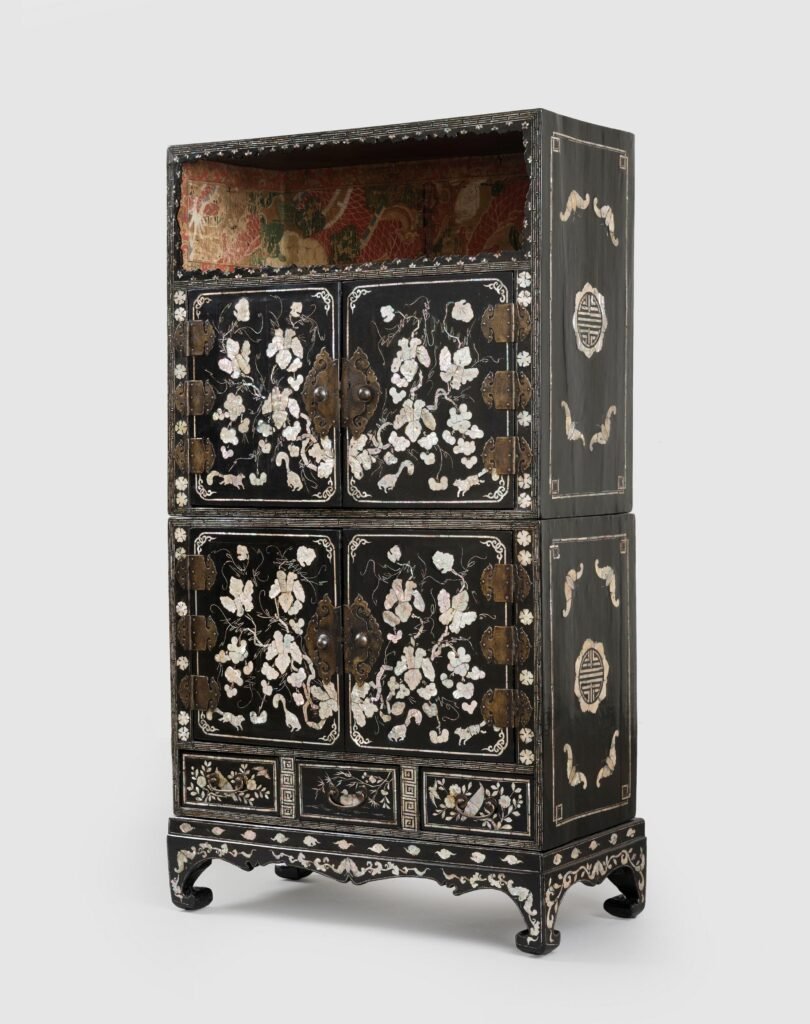


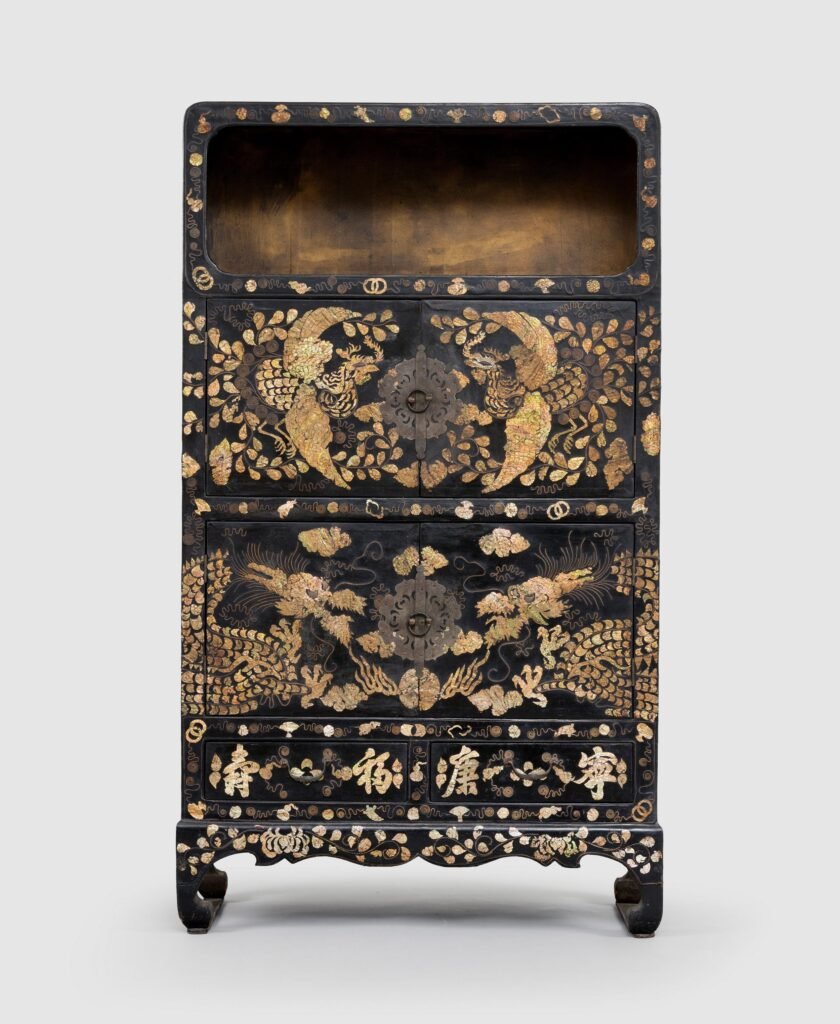
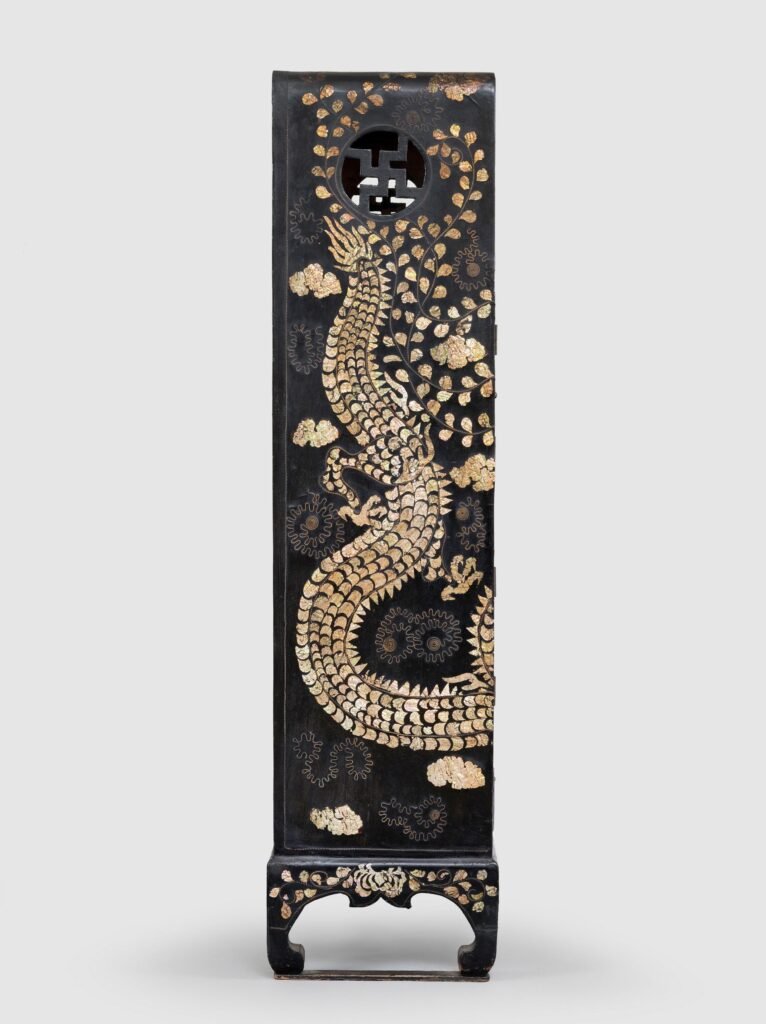
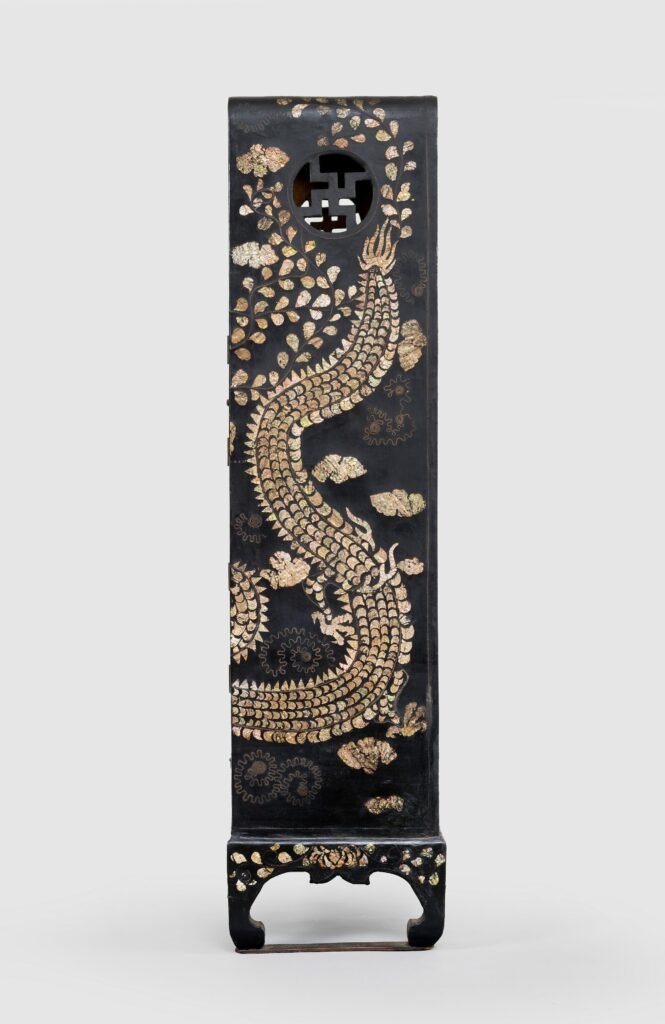
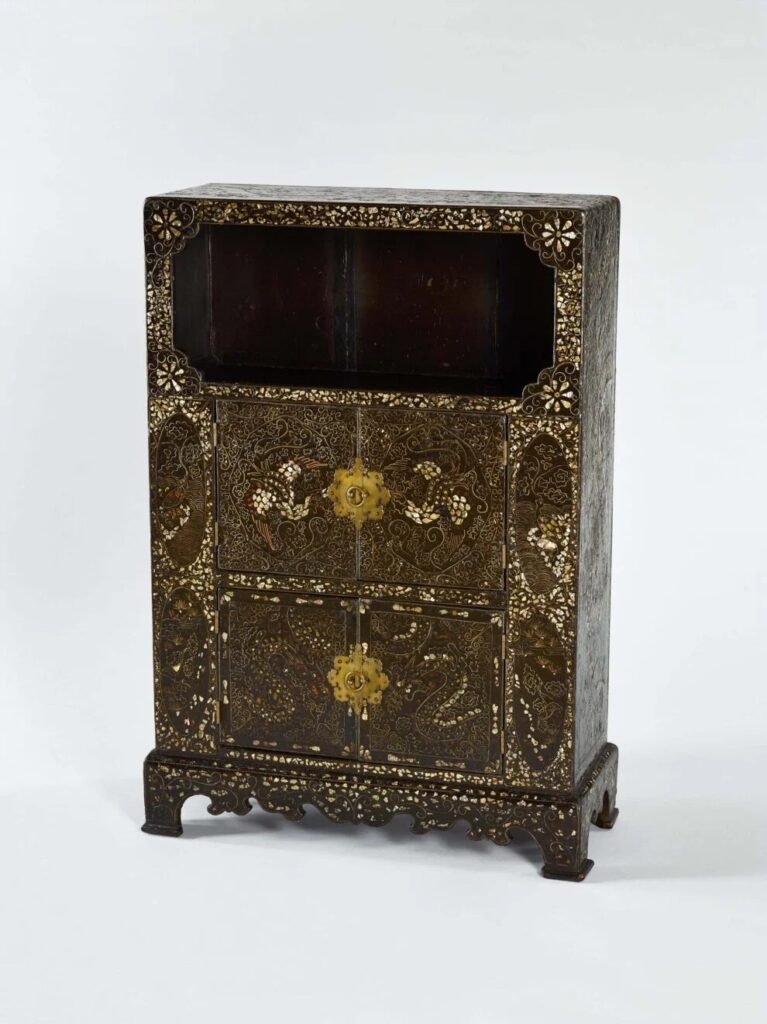
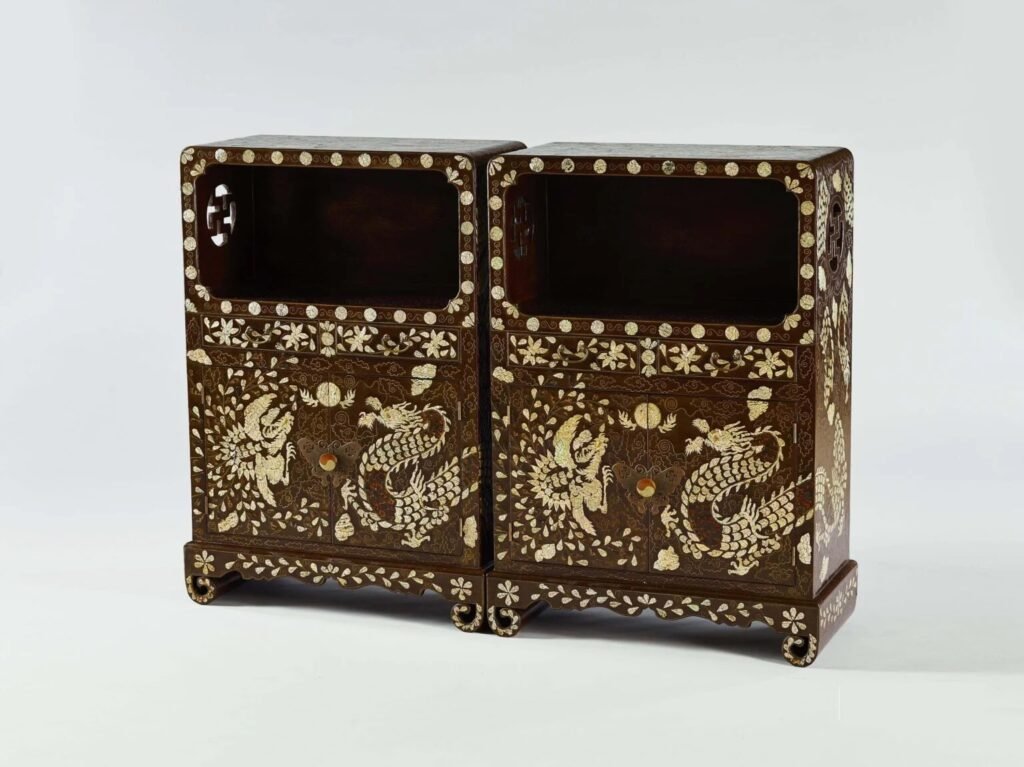
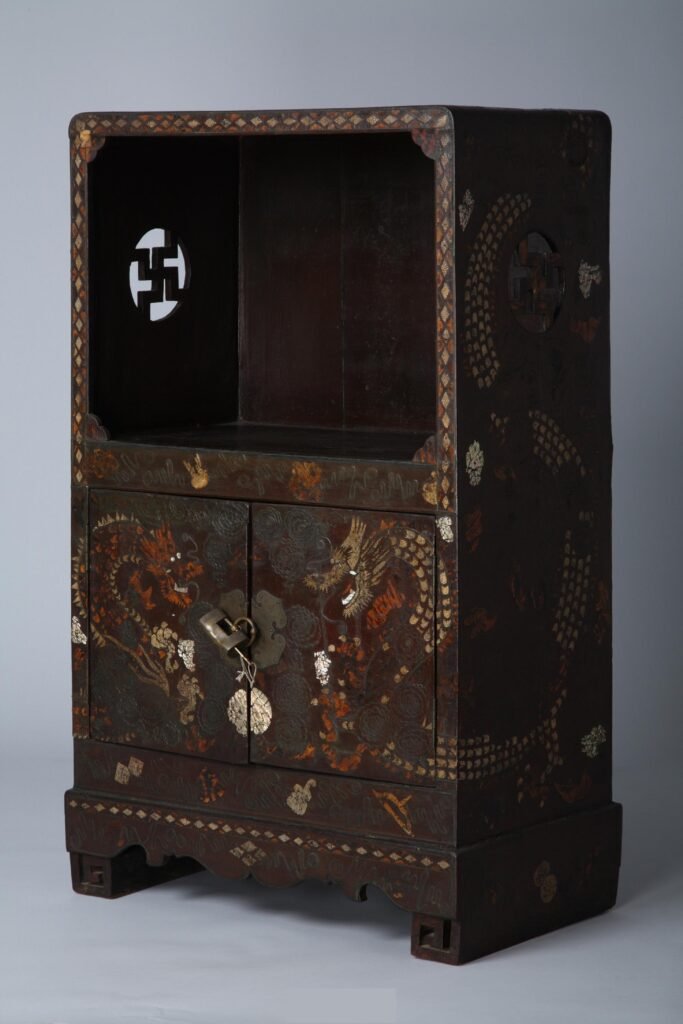
Collection: National Folk Museum, Seoul.
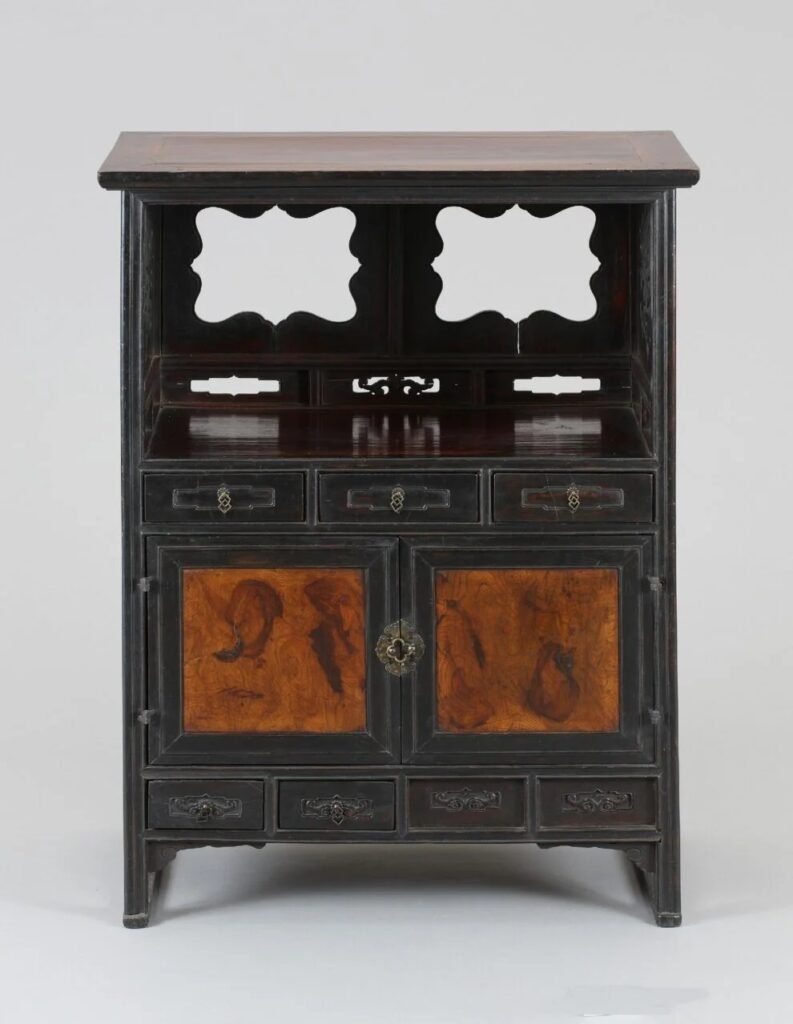
Collection: National Palace Museum, Seoul.
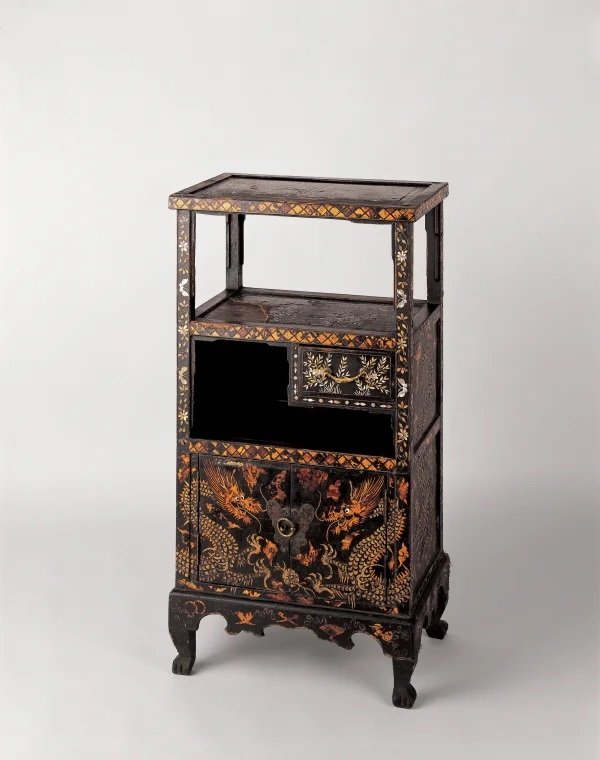
Collection Gyeonggi province Museum.
Fine hemp was applied to the pine tree, followed by the application of black lacquer and splendid decoration with sharkskin and mother-of-pearl. At the lower part of the front and on the sides, a scene depicting two dragons fighting over Yeouiju in a cloudy sky is depicted, with grass and insect patterns delicately balanced between them. Additionally, other areas are adorned with grass and insect patterns crafted from mother-of-pearl on top of black lacquer. Considering its elegance and sophistication, it is presumed to have been crafted for the royal court.

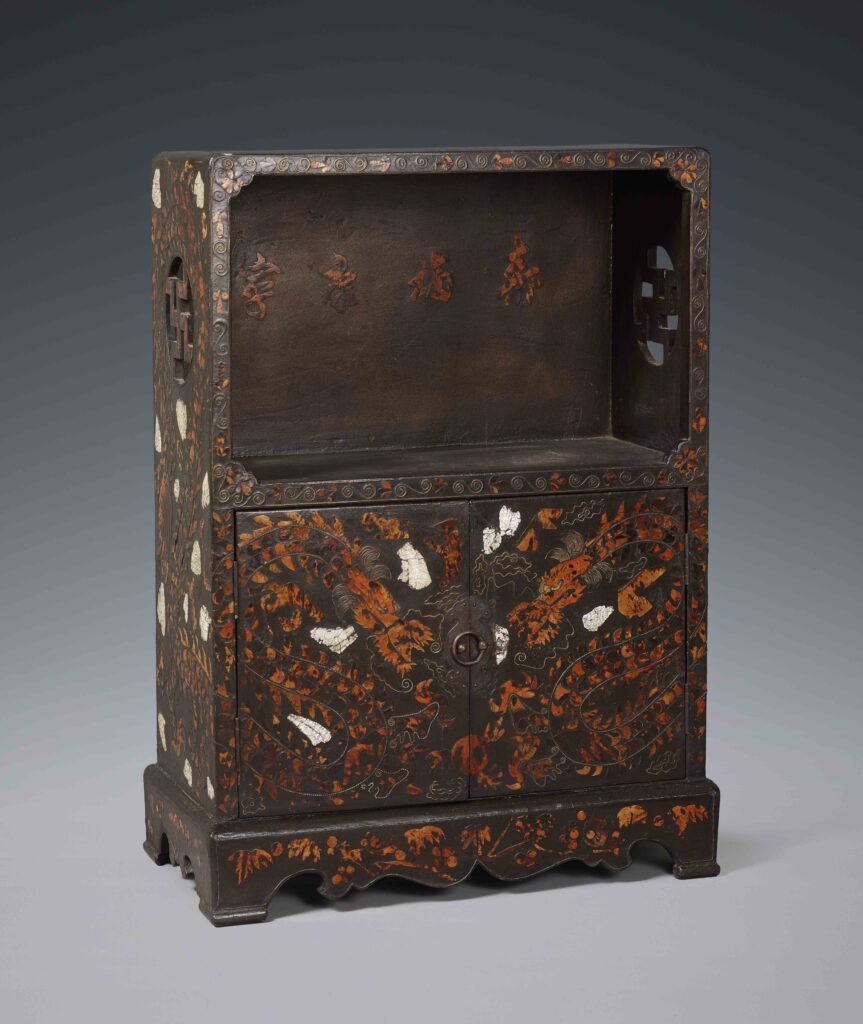
Collection: Cheonan Museum, Chungcheong Do province.
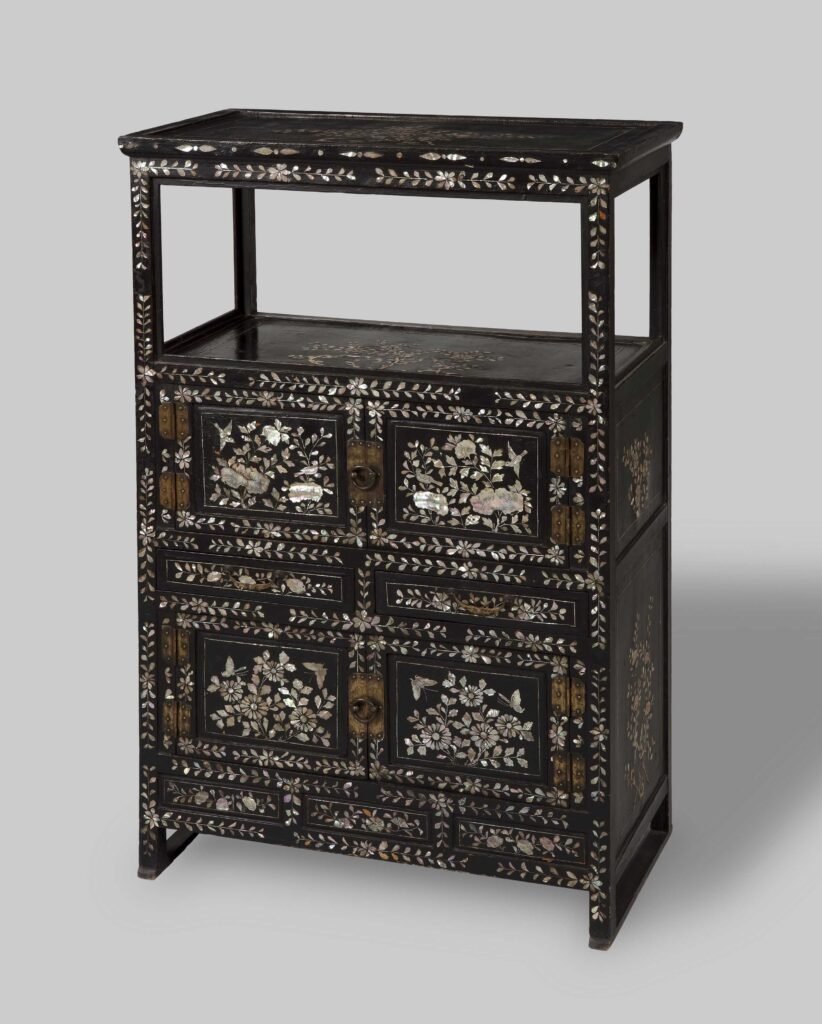
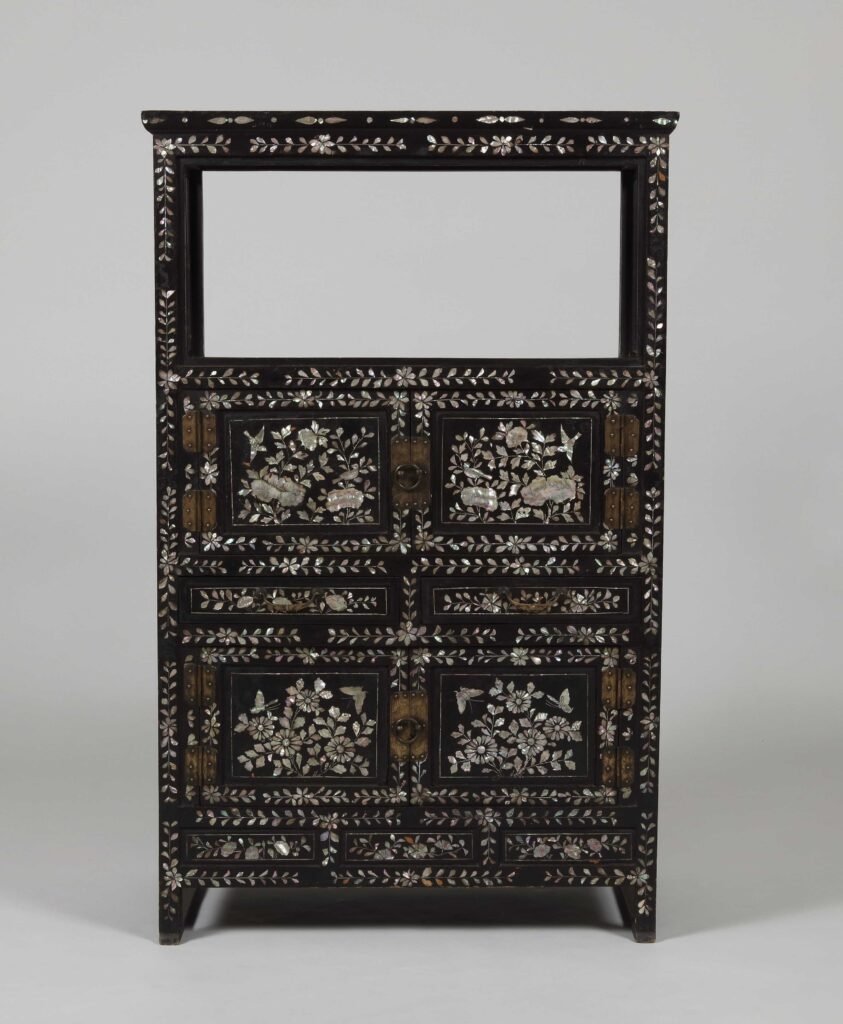
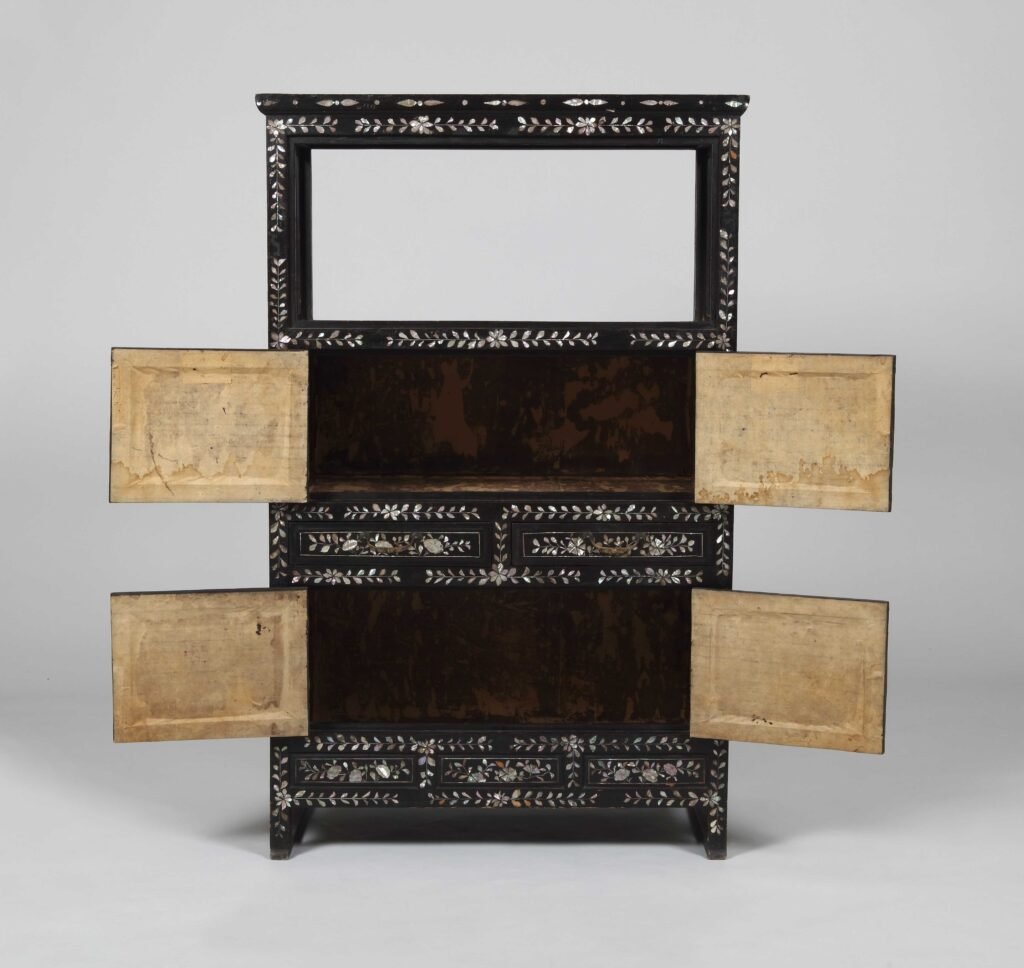
Period: Japanese occupation.
Collection: Busan Metropolitan City Museum.
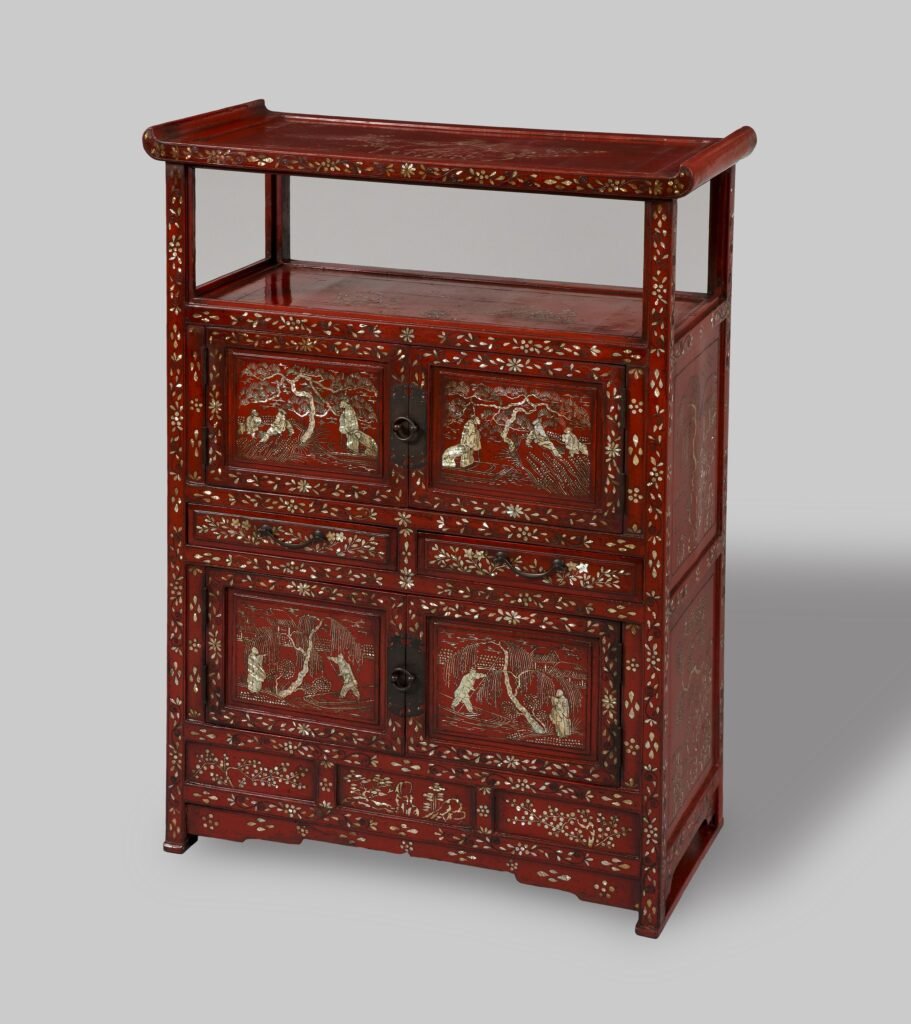

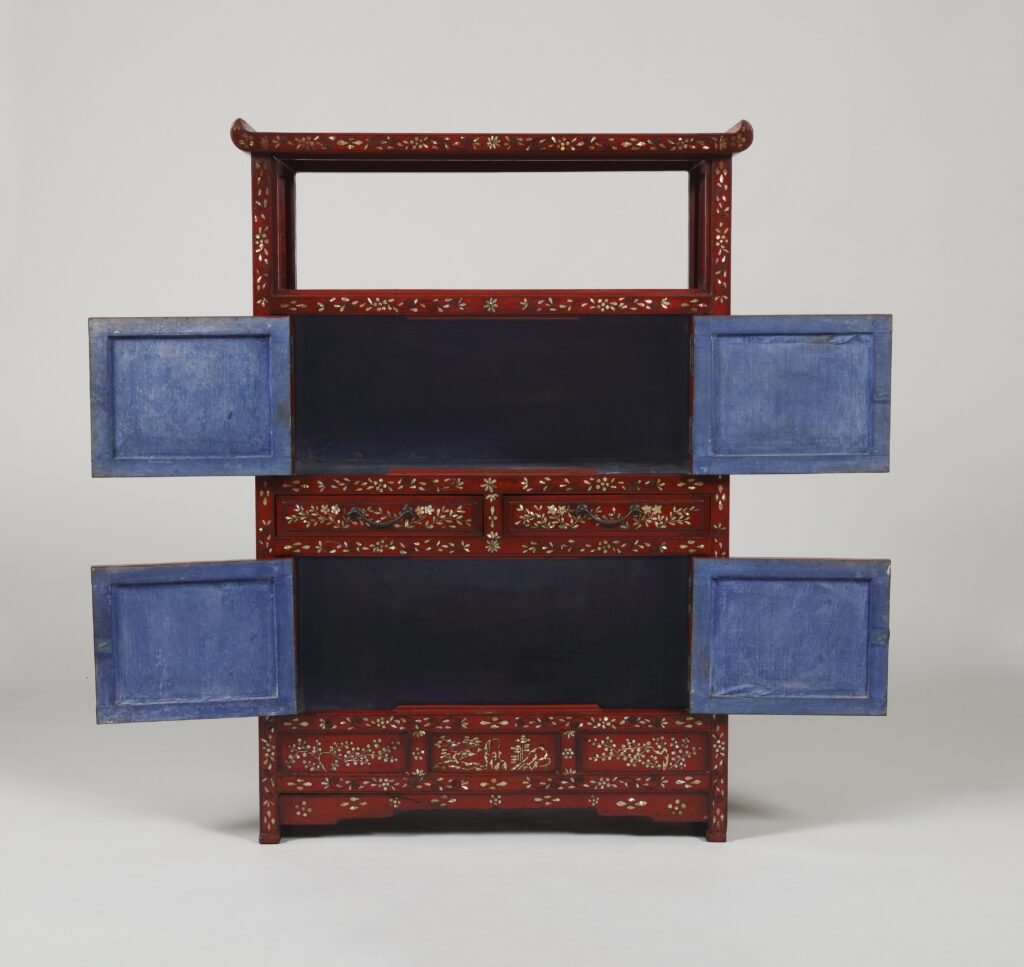
H. 102,8cm, W. 73,1cm, D. 34,7cm.
Collection: Busan Metropolitan City Museum
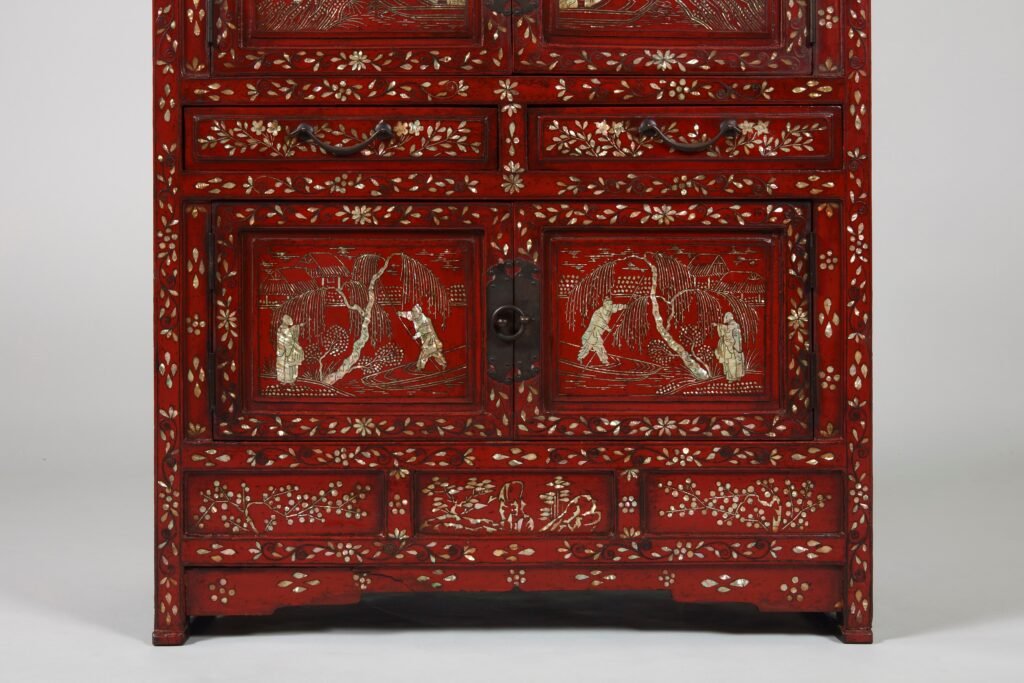
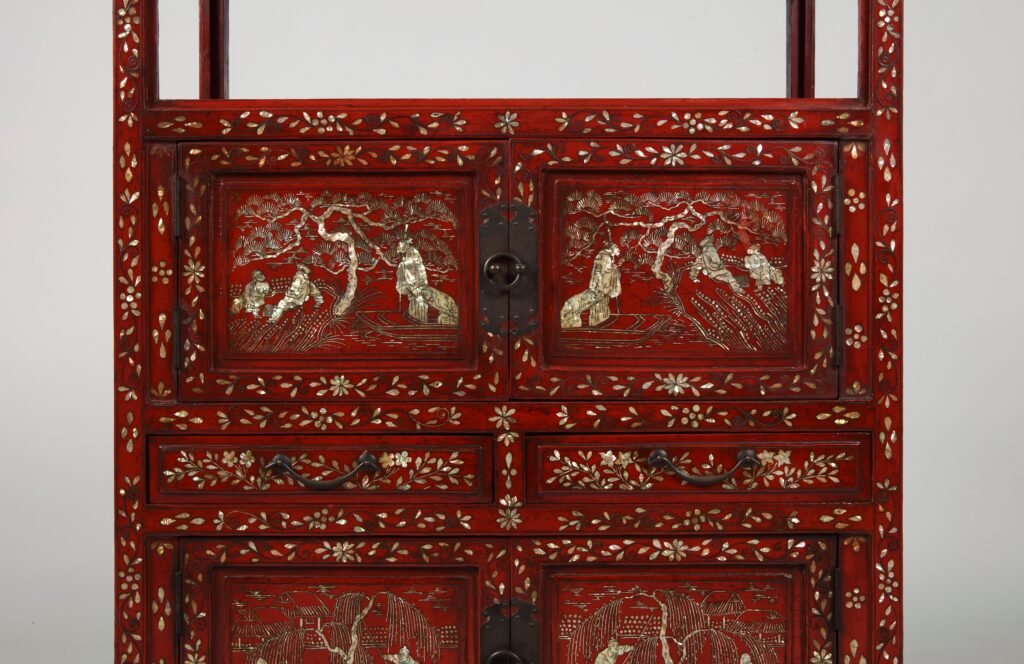
This piece of furniture is entirely lacquered and adorned with various mother-of-pearl patterns. The top level features open sides with four pillars and a roll-up ceiling, centered around a large rock embellished with floral and pine tree motifs. The third level panel depicts a tranquil river flowing between rocks with a ferry.
The swing doors on the first and second levels have frames on all sides to prevent warping. These doors feature twisted metal wire frames, symmetrically decorated scenes of meeting a hermit on a boat, with varying details in rocks, trees, and clothing folds. The second level shows a scene under a pine tree, while the first level depicts standing under a willow tree with a house and clouds across the river.
Between the first and second levels, two small drawers with bow-shaped latches are placed. These drawers are divided into sections with twisted metal wire borders and decorated with flower motifs, showcasing different petal shapes on each side. A section below the first-level swing door is decorated with flowers, trees, and rocks for stability.
The side panels are adorned with pavilion and landscape patterns on the second level, and rock, tree, and grass landscapes on the first level. The front pillars and doorway are decorated with twisted metal wire borders and flower motifs, rhythmically expressing vines with mother-of-pearl folded into flower petals and leaves.
The interior is lined with purple-tinted paper. Some vermilion lacquer on the pedestal and other areas has been restored, with some metal wire and mother-of-pearl elements missing.

